Nicolaus Copernicus Monument
Introduction
Text-to-speech Audio
Images
Nicolaus Copernicus Monument in front of Chicago's Adler Planetarium
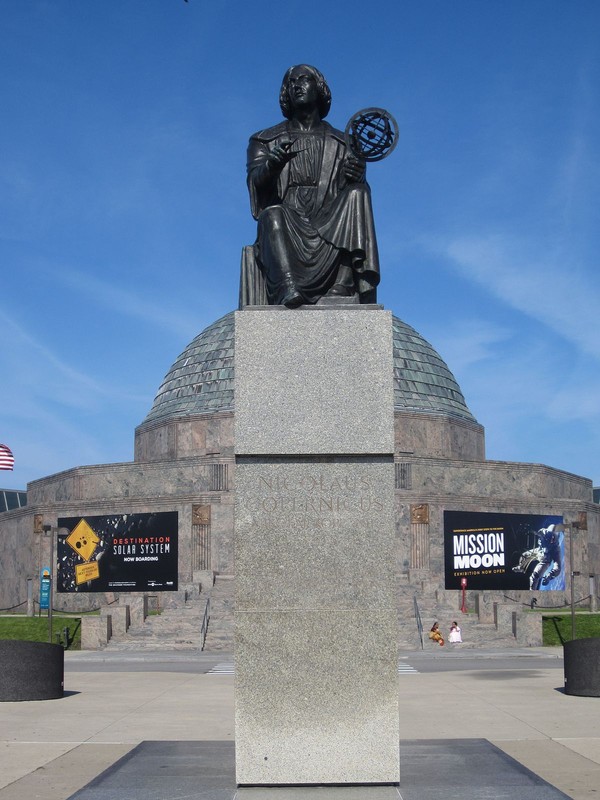
Nicolaus Copernicus (1473-1543)
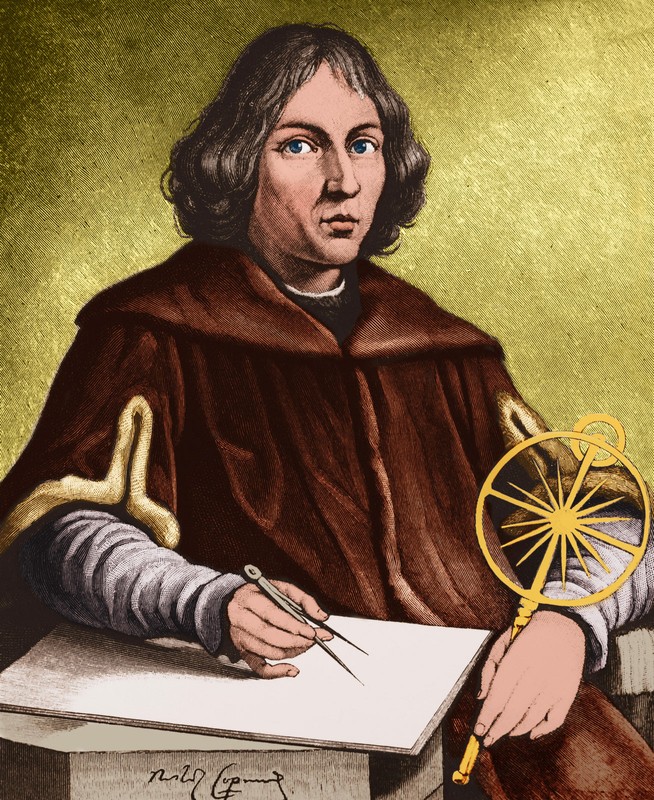
A closer look at the bronze sculpture
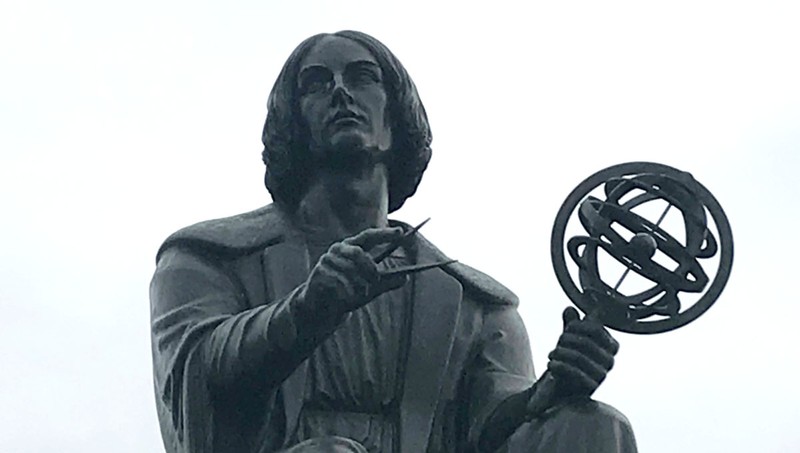
A photograph of the crowd at the monument's dedication ceremony in October 1973
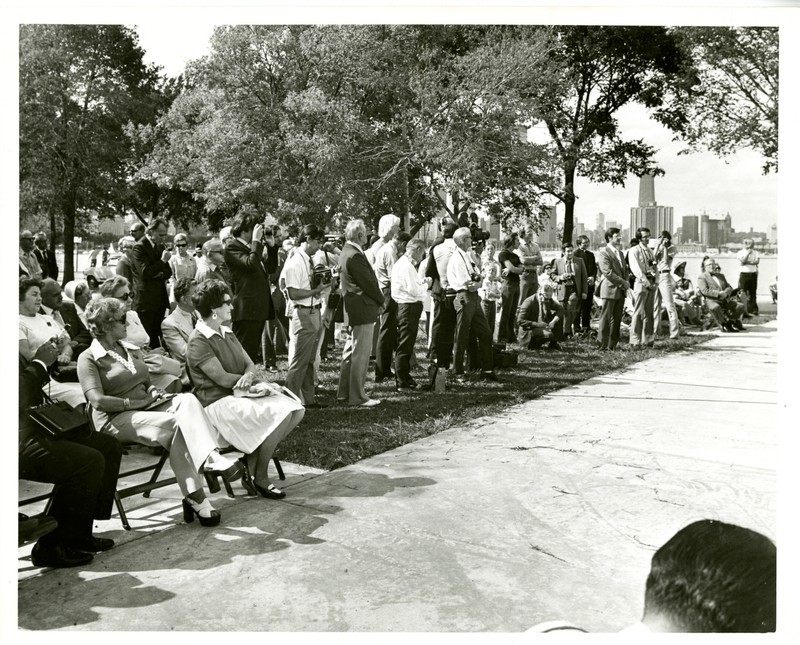
The monument to Copernicus in Warsaw
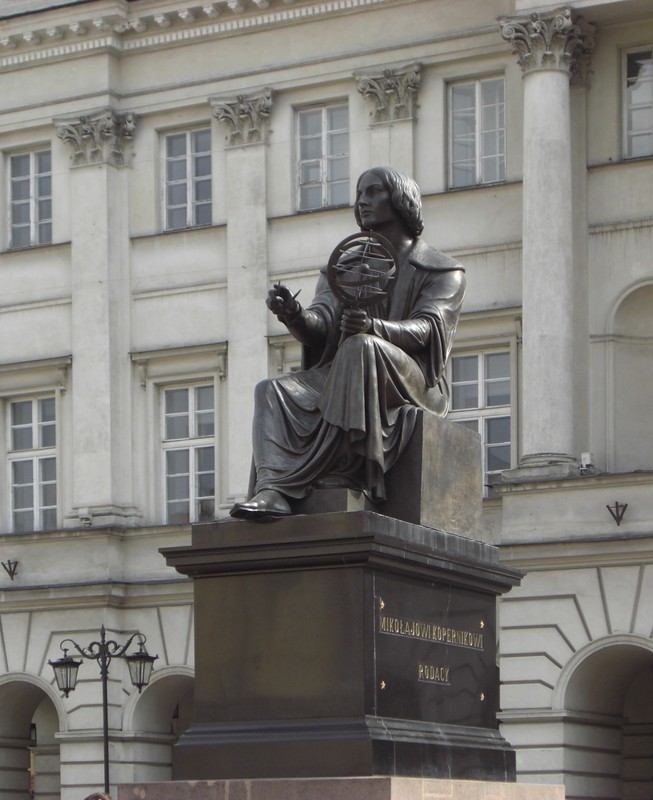
Backstory and Context
Text-to-speech Audio
Nicolaus Copernicus (Polish: Mikołaj Kopernik) was born on February 19, 1473 in the town of Toruń along the Vistula River in what is now Poland. His father was a wealthy merchant and his mother came from a prominent merchant family. The youngest of four children, Copernicus went to live with his maternal uncle, Lucas Watzelrode, after the death of his father sometime between 1483 and 1485. A future Catholic bishop, Watzelrode treated his nephew as his own and saw to it that he received an elite education. Copernicus studied liberal arts—including astronomy and astrology—at the University of Kraków before resuming his studies at the University of Bologna. While living in Bologna, he briefly resided in the home of the university’s principal astronomer, Domenico Maria de Novara. Copernicus then studied medicine at the University of Padua before receiving a doctorate in canon law from the University of Ferrara in 1503.
Three years later, Copernicus returned to Poland, where he served as a church canon. In the role, he collected rents and oversaw the finances of the bishopric of Frombork. During his free time, Copernicus conducted astronomical observations. Sometime between 1508 and 1514, he wrote the Commentariolus, or “Little Commentary,” a short manuscript that briefly outlined an early version of his heliocentric theory. In the work, Copernicus also correctly proposed the order of the known planets from the sun and estimated their orbital periods. Finally, he argued that Earth turned daily on its axis while it revolved around the sun and theorized that while orbiting the sun it tilted on its axis, which accounted for the changing seasons. Copernicus circulated copies of the treatise among some astronomers and philosophers, but it was never published during his lifetime. Additional astronomical observations and mathematical calculations led to De revolutionibus orbium coelestium (“On the Revolutions of the Heavenly Spheres”), which contained the final version of his heliocentric theory. Although he completed the work around 1530, Copernicus withheld its publication until 1543, the year of his death. While he may have feared that his findings would incur the wrath of the Catholic Church, the most likely reason for the publication delay was that he needed to provide astronomical observations and mathematical calculations to support his arguments.
Copernicus died on May 24, 1543 in the town of Frombork in what is now Poland. At the time of his death, his theory generated little discussion within the European scientific community. Its acceptance grew over time, however, thanks to the work of Galileo, Johannes Kepler, and Sir Isaac Newton. By the late eighteenth century, Copernicus’s theory was nearly universally accepted.
To observe the five hundredth anniversary of Copernicus’s birth, Chicago’s Adler Planetarium unveiled a monument in honor of him in 1973. In the preceding years, the Copernicus Foundation of Chicago raised $150,000 to commission a replica of a monument to Copernicus in Warsaw at the Staszic Palace, now home to the Polish Academy of Sciences. Designed by esteemed Danish sculptor Bertel Thorvaldsen in the early nineteenth century, the Warsaw monument suffered significant damage during the Second World War. After the conflict, it underwent repairs and restoration, and was rededicated in 1949. Decades later, Polish sculptor Bronislaw Koniuszy recast the Warsaw monument from the original plaster model created by Thorvaldsen. Dedicated on October 14, 1973 outside Adler Planetarium in Chicago’s Northerly Island Park, the monument consists of a 100,000-pound bronze statue of Copernicus on a tall pedestal composed of eight granite blocks. The sculpture depicts him sitting, holding an armillary sphere in his left hand and a pair of dividers in the right. Among those in attendance at the unveiling ceremony were Chicago Mayor Richard J. Daley, who declared the fourteenth of October Nicolaus Copernicus Day.
Sources
History.com Editors. "Nicolaus Copernicus." History. A&E Television Networks. 24 October 2019. Web. 30 March 2021 <https://www.history.com/topics/inventions/nicolaus-copernicus>.
"Nicolaus Copernicus Monument." Chicago Park District. City of Chicago. Web. 30 March 2021 <https://www.chicagoparkdistrict.com/parks-facilities/nicolaus-copernicus-monument>.
Westman, Robert S. "Nicolaus Copernicus." Encyclopædia Britannica. Web. 30 March 2021 <https://www.britannica.com/biography/Nicolaus-Copernicus>.
https://en.wikipedia.org/wiki/Nicolaus_Copernicus_Monument_(Chicago)
https://www.britannica.com/biography/Nicolaus-Copernicus
https://www.adlerplanetarium.org/blog/copernicus-the-astronomer-the-city/
https://www.adlerplanetarium.org/blog/copernicus-the-astronomer-the-city/
https://commons.wikimedia.org/wiki/File:Nicolaus_Copernicus_Monument_in_Warsaw,_Poland1.jpg
